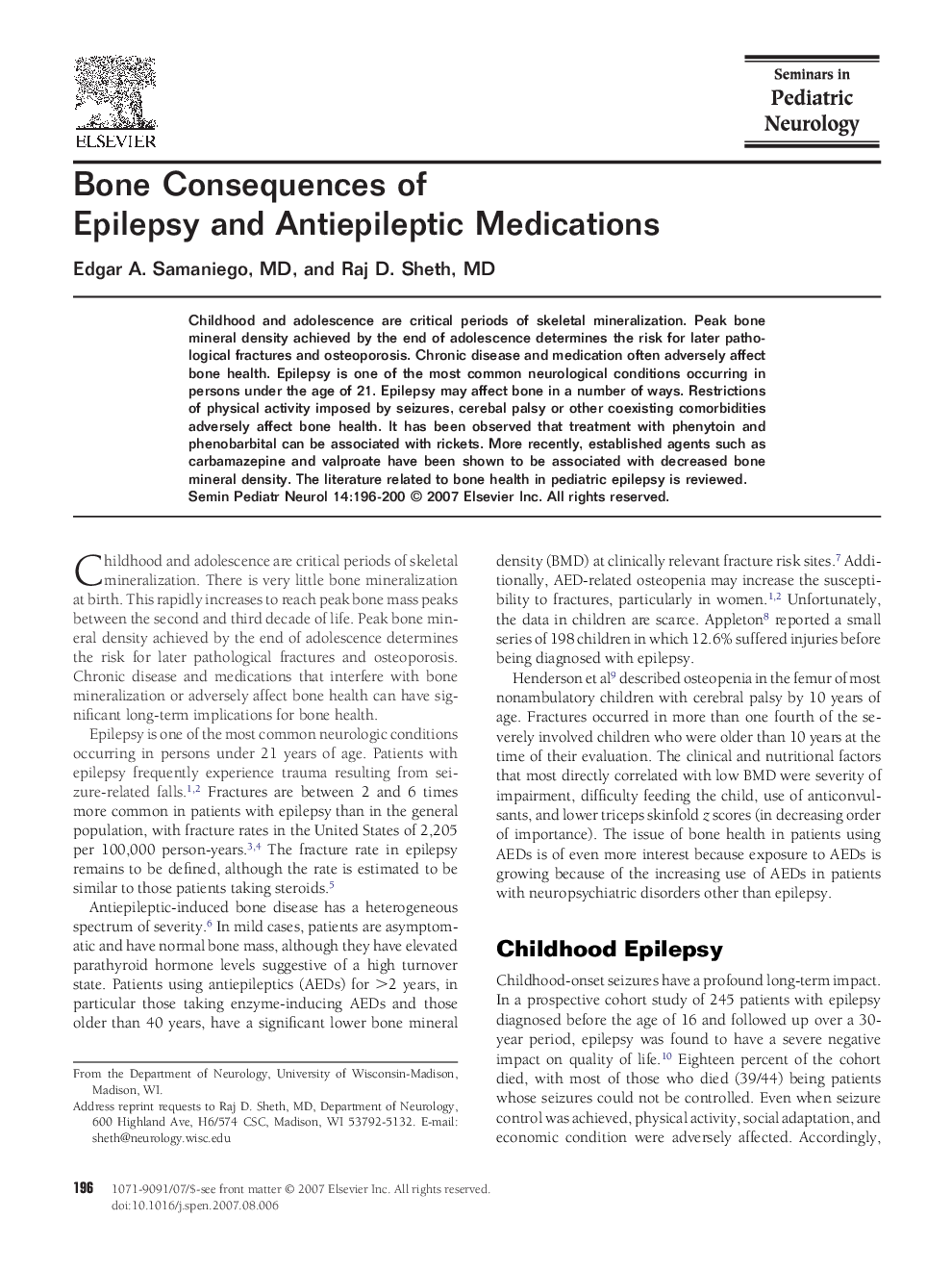| Article ID | Journal | Published Year | Pages | File Type |
|---|---|---|---|---|
| 3091273 | Seminars in Pediatric Neurology | 2007 | 5 Pages |
Childhood and adolescence are critical periods of skeletal mineralization. Peak bone mineral density achieved by the end of adolescence determines the risk for later pathological fractures and osteoporosis. Chronic disease and medication often adversely affect bone health. Epilepsy is one of the most common neurological conditions occurring in persons under the age of 21. Epilepsy may affect bone in a number of ways. Restrictions of physical activity imposed by seizures, cerebal palsy or other coexisting comorbidities adversely affect bone health. It has been observed that treatment with phenytoin and phenobarbital can be associated with rickets. More recently, established agents such as carbamazepine and valproate have been shown to be associated with decreased bone mineral density. The literature related to bone health in pediatric epilepsy is reviewed.
